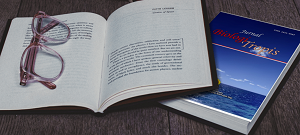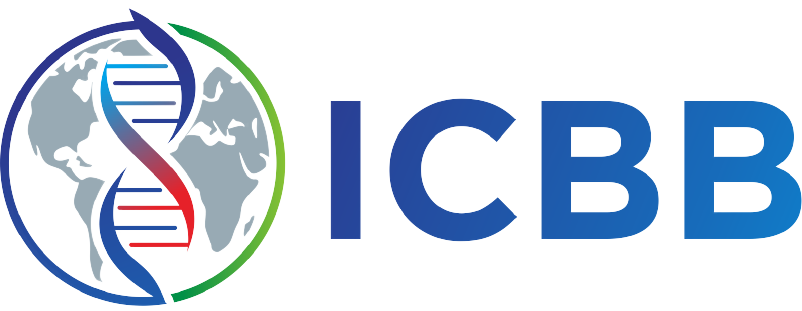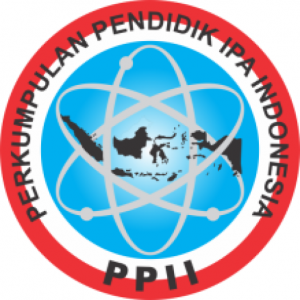Potential of Red Algae Eucheuma cottoni as Antibacterial to Pseudomonas aeruginosa
Authors
Yesha Ibanez Tiarani , Oktora Susanti , Galuh Praka Siwi , Muhammad Nurwenta Kurniawan , Komang Putri Aryani , Nia Ramadhani , Moch. Dhaffa Abudhzar Ghyffary , Arsyah Poetra Lasmono , Tiara Safitri , Salsabila Tamaulina , Wanda Andella PutriDOI:
10.29303/jbt.v25i1.8272Published:
2025-01-30Issue:
Vol. 25 No. 1 (2025): Januari - MaretKeywords:
Antibacterial, disk diffusion, Eucheuma cottonii, water bath, rotary evaporator, Pseudomonas aeroginosa.Articles
Downloads
How to Cite
Downloads
Metrics
Abstract
Eucheuma cottonii is one type of macroalgae that has been widely cultivated. Potential resources that can be developed is the use of macroalgae as antibacterial. Bioactive compounds in Eucheuma cottonii namely alkaloids, flavonoids, terpenoids, tannins, and saponins can be utilized as antibacterials. This study aims to see the antibacterial activity of Eucheuma cottoni seaweed extract against Pseudomonas aeruginosa bacteria using the disc diffusion method. The test was conducted from October 7 to December 14, 2024, at the Aquatic Productivity Laboratory, and Oceanography Laboratory, Marine Science study program, Department of Fisheries and Marine, Faculty of Agriculture, University of Lampung. Samples were taken from Lontar Village, Tirtayasa District, Serang Regency, Banten Province. Dilution of Eucheuma cottonii extract with a concentration of 10,000 ppm 5,000 ppm, 1000 ppm, 100 ppm and 10 ppm. The variable observed was the magnitude of the inhibition zone of Eucheuma cottoni against Pseudomonas aeruginosa bacteria. The results showed that Eucheuma cottonii extract had weak antibacterial activity, with the highest inhibition zone of 13.93 mm at a concentration of 10,000 ppm. This study shows that Eucheuma cottonii extract is only effective in inhibiting the growth of Pseudomonas aeruginosa bacteria in the first 48 hours. Further research is needed to improve the effectiveness of this extract as a natural antibacterial agent.
References
Amir, N. I., Nurfadillah, A. & Dani, T. R. (2023). Potential of Red Algae Eucheuma spinosum as Antibacterial to Pseudomonas aeruginosa. Jambura Medical and Health Science Journal, 2(2): 72-80. DOI: https://doi.org/10.37905/jmhsj.v2i2.21581
Anggraeni, A. & Triajie, H. (2021). Uji Kemampuan Bakteri (Pseudomonas Aeruginosa) dalam Proses Biodegradasi Pencemaran Logam Berat Timbal (Pb), di Perairan Timur Kamal Kabupaten Bangkalan. Journal Trunojoyo, 2(3): 176-185. DOI: https://doi.org/10.21107/juvenil.v2i3.11754
Artini N. P. R., Mahardiananta I. M. A., dan Nugraha I. M. A. (2022). Rancang Bangun Chiller Berbasis Mikrokontroler Untuk Evaporasi Senyawa Bahan Alam. Jurnal RESISTOR (Rekayasa Sistem Komputer), 5(1): 10-16. https://dx.doi.org/10.31598/jurnalresistor.v5i1.1082.
Ayhuan, H. V., Zamani, N. P. & Soedharma, D. (2017). Analisis Struktur Komunitas Makroalga Ekonomis Penting di Perairan Intertidal Manokwari, Papua Barat. Jurnal Teknologi Perikanan dan Kelautan, 8(1): 19-38. DOI: 10.29244/jtekr.8.1.19-38
Badaring, Deni. R., Sari, S. P. M., Nurhabibah, S., Wulan, W. & Lembang, S. A. R. (2020). Uji Ekstrak Daun Maja (Aegle marmelos L) terhadap Pertumbuhan Bakteri Escherichia coli dan Staphylococcus aureus. Indonesian Journal of Fundamental Science (IJFS), 6(1): 16-26. DOI: 10.24843/IJFS.2020.v06.i01.p04
Balai Besar Pengembangan Budidaya Laut. (2008). Teknologi Budidaya Rumput Laut (Kappaphycus alvarezii). Lampung: Direktorat Jenderal Perikanan Budidaya.
Bryan, T., Defny, W., & Erladys, R. (2024). Uji Aktivitas Antibakteri Ekstrak Alga Halimeda opuntia dari Perairan Desa Poopoh Kabupaten Minahasa Terhadap Pertumbuhan Bakteri. PHARMACON, 13(1): 507-514. DOI: https://doi.org/10.35799/pha.13.2024.49364
Chairunisa, I. & Indradi, R. B. (2020). Riview artikel aktivitas bakteri dan kandungan fitokimia ekstrak etanol alga merah (Eucheuma cottonii). Farmaka Suplemen, 17(1): 105-110. DOI: https://doi.org/10.24198/jf.v17i1.22221
Denatri AH, Maisaroh DS, Kartika AGD, Susanti O, & Munir M. (2023). Antibacterial activities of the extracts of sponge Agelas cervicornis agains bacteria Staphylococcus aureus. Journal of Marine Resources & Coastal Management. 4(2):01-06. DOI: 10.29080/mrcm.v4i2.1592
Diggle, S. P. & Whiteley, M. (2020). Microbe Profile: Pseudomonas aeruginosa: Opportunistic Pathogen and Lab Art. Microbiology, 166: 30-33.
Fransiska, A. N., Masyrofah, D., Marlin, H., Sakina, I. F. & Tyasna, P. S. (2021). Identifikasi Senyawa Terpenoid dan Steroid pada Beberapa Tanaman menggunakan Pelarut n-heksana. Jurnal Health Sains, 2(6): 733-741. https://doi.org/10.1099/mic.0.000860
Ghazali, M., Rahmawati, R., Puji Astuti, S. & Sukiman, S. (2019). Jenis Alga Merah (Rhodophyta) Pada Ekosistem Hutan Mangrove Di Dusun Ekas, Kabupaten Lombok Timur. Fish Scientiae, 8(1): 1-13. https://doi.org/10.20527/fishscientiae.v8i1.127
Greenwood. (1995). Antibiotic Susceptibility (Sensitivity) Test Antimicrobial and Chemotherapy. Mc Graw Hill Company: USA.
Haryati, H., & Munandar, A. (2015). Pemberdayaan Masyarakat Wirausaha Mandiri Berkelanjutan Melalui Diversifikasi Olahan Produk Berbasis Rumput Laut Euchema Cottonii Di Desa Lontar, Kecamatan Tirtayasa, Provinsi Banten. Jurnal Perikanan dan Kelautan, 5(2): 67-78. DOI: https://doi.org/10.33512/jpk.v5i2.1066
Husna, S., Nurlaida, Yusriadi, Utami, H. H. & Najmah. (2023). Komponen Fitokimia Dan Aktivitas Antioksidan Rumput Laut Eucheuma Cottonii Di Perairan Desa Pajukukang Bantaeng. Jurnal Crystal: Publikasi Penelitian Kimia dan Terapannya, 5(2), 9-15. DOI: https://doi.org/10.36526/jc.v5i2.2769
Husni, Wildian, & Meqorry, Y. (2017). Rancang bangun shaking water bath berbasis mikrokontroler ATmega16. Jurnal Fisika UNAND, 6(1): 9-16. DOI: https://doi.org/10.25077/jfu.6.1.9-16.2017.
Hutabarat, M. A. A., Sari, N. I., & Leksono, T. (2020). Uji Efektivitas Antibakteri Ekstrak Rumput Laut (Eucheuma Cottonii) Terhadap Bakteri Bacillus Cereus Dan Pseudomonas Aeruginosa. Universitas Riau. Pekanbaru.
Ira, Rahmadani, & Irawati, N. (2018). Komposisi Jenis Makroalga di Perairan Pulau Hari Sulawesi Tenggara (Spesies Composition of Makroalga in Hari Island, South East Sulawesi). Jurnal Biologi Tropis, 18(2): 141–158. DOI: https://doi.org/10.29303/jbt.v18i2.770
Kurnia, D., Suhardiman, A., Nurdiansyah, H. & Ghazali, M. (2020). Aktivitas antibakteri ekstrak dan fraksi makroalga Eucheuma cottoni terhadap bakteri penyebab jerawat. Jurnal Agrotek UMMAT, 9(2).
Lantah P., Lita, M. & Reo, A. (2017). Kandungan fitokimia dan aktivitas antioksidan ekstrak metanol rumput laut Kappaphycus alvarezii. Jurnal Media Teknologi Hasil Perikanan, 5(3): 73-79. DOI: https://doi.org/10.35800/mthp.5.3.2017.16785
Mahmudah, R., A. Mu'nisa. & R. Ngitung. (2019). Identifikasi Senyawa Bioaktif Ekstrak Teripang Hitam (Holothuria edulis). Prosiding Seminar Nasional Biologi VI, 609-613.
Melville, F. (2005). Mangrove algae in the assessment of estuarine pollution. University of Technology. Sydney (AU). Pp: 302. DOI: https://doi.org/10.1111/j.0022-3646.1980.00001.x
Mewengkang, T. M., Lintang, R. A. J., Losung, F., Sumilat, D. A. & Lumingas, L. J. L. (2022). Identifikasi Senyawa Bioaktif Dan Pengujian Aktivitas Antibakteri Ekstrak Daging Teripang Holothuria (Halodeima) atra Jaeger 1833 Asal Perairan Pantai Kalasey, Minahasa. Jurnal Ilmiah Platax, 10(2): 355-353. DOI: https://doi.org/10.35800/jip.v10i2.42271
Mushlihah, H., Amri, K. & Faizal, A. (2021). Diversity and Distribution of Macroalga to Environmental Condition of Makassar City. Jurnal Ilmu Kelautan, 7(1): 16-26. DOI: https://doi.org/10.20956/jiks.v7i1.14856
Mutamimah, D., Iid, M. & Arfiati, U. U. (2022). Karakterisasi Bioaktif Ekstrak Eucheuma cottonii di Perairan Desa Sumberkencono Banyuwangi. Jurnal Ilmu Perikanan dan Kelautan, 4(2): 65 71. DOI: https://doi.org/10.36526/lemuru.v4i2.2105
Ndahawali, S., Tarigan, N., Tega, Y. R., Henggu, K. U. & Meiyasa, F. (2021). Analisis kandungan fitokimia beberapa jenis makroalga dari perairan Pantai Londa Lima Kabupaten Sumba Timur. Jambura Fish Processing Journal, 3(2): 46-50. DOI: https://doi.org/10.37905/jfpj.v3i2.1023
Novard, M. F. A., N. Suharti., & R. Rasyid. (2019). Gambaran Bakteri Penyebab Infeksi Pada Anak Berdasarkan Jenis Spesimen dan Pola Resistensinya di Laboratorium RSUD Dr. Djamil Pada Tahun 2014-2016. Jurnal Kesehatan Andalas, 8(2), 26-32. DOI: https://doi.org/10.25077/jka.v8i2S.955
Nurama, D. F., Maisaroh, D. S., Munir, M., Kartika, A. G. D., Susanti, O., & Joesidawati, M. I. 2023. Antibacterial potential marine sponge extract and bacteria symbionts Callyspongia vaginalis from Kendit Waters Against
the bacteria Vibrio harveyi. IOP Conference Series: Earth and Environmental Science. Hlm. 012028. DOI:10.1088/1755-1315/1251/1/012028.
Ode, I. & Wasahua, J. (2014). Jenis-jenis alga coklat potensial di perairan pantai Desa Hutumuri Pulau Ambon. Jurnal Agribisnis Perikanan, 7(2): 39-45.
Pratiwy, F. M., Arifah, F. N., Herawati, T., Iskandar, Rosidah, Widya, S. N. & Husna, W. (2022). Isolasi Bakteri Endofit pada Alga Merah (Gracilarilari sp.) dan Aktivitas Anti Bakteri terhadap Pertumbuhan Vibrio sp. DAN Staphylococcus aureus. BIOMA, 18(2): 59-69. DOI: https://doi.org/10.21009/Bioma18(2).3
Ritan, Y. E. H., Wewengkang, D. S. & Siampa, (2021). Uji Antibakteri Ekstrak dan Fraksi Alga Caulerpa racemose Dari Perairan Pulau Mantehage Minahasa Terhadap Utara Pertumbuhan Bakteri Staphylococcus aureus dan Escherichia coli. PHARMACON, 10(2): 905-911. DOI: https://doi.org/10.35799/pha.10.2021.34042
Samman, A. & Achmad, M. J. (2023). Diversitas dan Distribusi Alga Merah (Rhodophyta) di Perairan Pulau Ternate. Jurnal Kelautan Tropis, 26(1): 148-154. DOI: https://doi.org/10.14710/jkt.v26i1.13342
Sari L. B., & Susanti, N. (2015). Skrining fitokimia dan aktivitas antioksidan fraksi etanol alga merah Eucheuma spinosum. Pharm Sci Res, 2(2): 59-67. DOI: https://doi.org/10.7454/psr.v2i1.3331
Scania, A. E. & Ningsih, I. (2023). Pseudomonas Aeruginosa: Permasalahan, Resistensi Antibiotik dan Pemeriksaan Mikrobiologi. Pratista Patologi, 8(3): 139-147.
Schlegel & Schmidt. (1994). Mikrobiologi Umum. Tedja Baskara, penerjemah. Gajahmada University Press. Yogyakarta.
Shanmugam, G. (2000). 50 years of the turbidite paradigm, (1950s–1990s): deep-water processes and facies models – a critical perspective. Marine and Petroleum Geology, 17: 285-342. DOI: https://doi.org/10.1016/S0264-8172(99)00011-2
Silvia, A. (2019). Analisis Kelimpahan Makroalga di Wilayah Perairan Pulau Lae-lae dan Pulau Barrangcaddi Kota Makassar. Skripsi. Program Sarjana, Program Studi Ilmu Kelautan, Fakultas Ilmu Kelautan dan Perikanan Universitas Hasanuddin.
Siregar, A. F., Sabdono, A. & Pringgenies, D. (2012). Potensi Antibakteri Ekstrak Rumput Laut Terhadap Bakteri Penyakit Kulit Pseudomonas aeruginosa, Staphylococcus epidermidis, dan Micrococcus luteus. Journal Of Marine Research, 1(2): 152-160. DOI: https://doi.org/10.14710/jmr.v1i2.2032
Siregar, A. F., Sabdono, A. & Pringgenies, D. (2012). Potensi Antibakteri Ekstrak Rumput Laut Terhadap Bakteri Penyakit Kulit Pseudomonas aeruginosa, Staphylococcus epidermidis, dan Micrococcus luteus. Journal Of Marine Research, 1(2): 152-160. DOI: https://doi.org/10.14710/jmr.v1i2.2032
Srimariana, E. S., Kawaroe, M., Lestari, D. F. & Nugraha, A. H. (2020). biodiversity and utilization of macroalgae at Tunda Island. Jurnal Ilmu Pertanian Indonesia, 25(1): 138–144. DOI: https://doi.org/10.18343/jipi.25.1.138
Susanti, O., Harpeni, E., Efendi, E., Karima, N., & Muamar, A. (2024). Screening of Endosymbion Fungus Potential on The Stem of Avicennia sp. from Shore of Bandar Lampung City as an Bacterial. Jurnal Biologi Tropis, 24 (2): 740 – 746. doi.org/10.29303/jbt.v24i2.7141.
Teo, B.S.X., Rui, .Y.G., Sarah, A.A., Thanchanok, S., Mohd, F.M.A., Eddy, Y. (2020). In Vitro Evaluation of antioxidant and antibacterial activities of Eucheuma cottonii extract and its in vivo evaluation of the wound-healing activity in mice. Journal of Cosmetic Dermatology, 1-9. DOI: https://doi.org/10.1111/jocd.13624
Trianto, A., Nirwani., Susanti, O., Maesaroh, D., & Radjasa, O. K. (2019). The bioactivity of bacterium and fungi living associate with the sponge Reniera sp. against multidrug-resistant Staphylococcus aureus and Escherichia coli. Biodiversitas, 20(8): 2301-2307. DOI: 10.13057/biodivd200827.
Yumiko, Y. S. (2003). Distribution of Flavonoids and Related Compounds from Seaweed In Japan. Tokyo University of Fisheries. Tokyo.
License
Copyright (c) 2025 Yesha Ibanez Tiarani, Oktora Susanti, Galuh Praka Siwi, Muhammad Nurwenta Kurniawan, Komang Putri Aryani, Nia Ramadhani, Moch. Dhaffa Abudhzar Ghyffary, Arsyah Poetra Lasmono , Tiara Safitri, Salsabila Tamaulina, Wanda Andella Putri

This work is licensed under a Creative Commons Attribution 4.0 International License.

Jurnal Biologi Tropis is licensed under a Creative Commons Attribution 4.0 International License.
The copyright of the received article shall be assigned to the author as the owner of the paper. The intended copyright includes the right to publish the article in various forms (including reprints). The journal maintains the publishing rights to the published articles.
Authors are permitted to disseminate published articles by sharing the link/DOI of the article at the journal. Authors are allowed to use their articles for any legal purposes deemed necessary without written permission from the journal with an acknowledgment of initial publication to this journal.


























